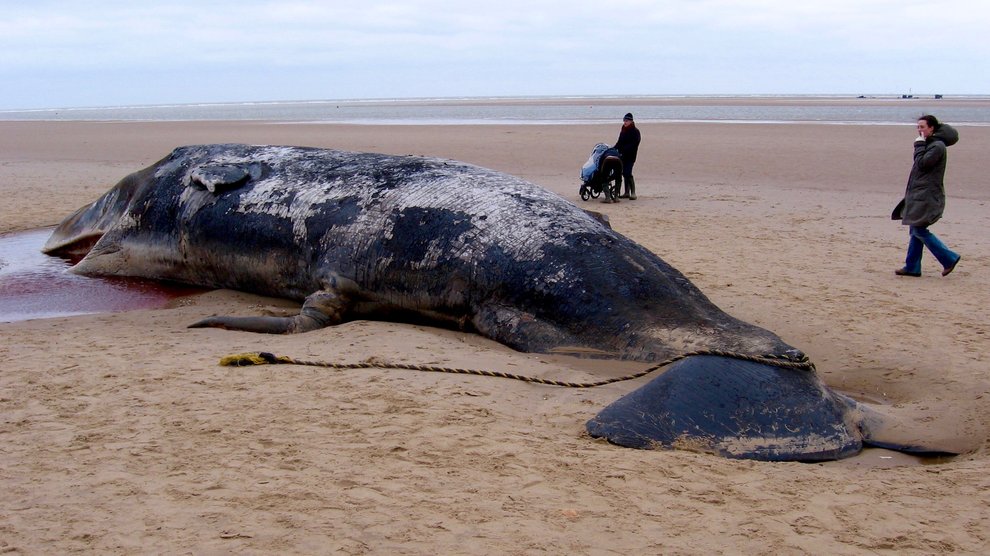Early in 2016, 29 sperm whales were found stranded on the coasts of Germany, the Netherlands, the UK, and France. The whales were mainly well fed, young, and disease-free, so scientists were puzzled by what caused these enormous mammals to wash ashore.
Now, Klaus Vanselow from the University of Kiel, Germany, and his colleagues think they have an idea.
At the very end of December 2015, two major solar storms produced huge displays of the aurora borealis that were seen in many parts of Scotland and elsewhere. These storms occur when coronal mass ejections from the sun spew large amounts of charged particles and radiation towards Earth. When they sweep over Earth’s upper atmosphere, they create spectacular light displays over the Arctic.

But these large-scale solar storms may have also distorted the magnetic field that whales use to find their way. This field isn’t uniform—instead, it is stronger in some places and weaker in others. Scientists believe that some species, including whales, birds, and bees, learn to read these differences in field strength and use it to navigate.
Scientists found that the solar events from December 2015 caused the magnetic fields to shift up to 285 miles in the region between the Scottish islands and Norway. This could have caused the sperm whales to move in the wrong direction.
Young male sperm whales grow up around the Azores, an area that sees minimal impacts from solar storms. Because of this, Vanselow believes the creatures in this region have little experience navigating when these abrupt and powerful events take place at the poles. He and his colleagues recently published their theory in the International Journal of Astrobiology. Here’s Matt McGrath reporting for BBC News:
“Where the polar lights are seen, that’s the region with the most geomagnetic disruptions on the Earth’s surface,” Dr Vanselow told BBC News.
“Sperm whales are very huge animals and swim in the free ocean so if they are disrupted by this affect, they can swim in the wrong direction for days and then correct it.”
“But in the area between Scotland and Norway, if the whales swim in the wrong direction for one or two days, then it is too late for them to go back, they are trapped.”
Vanselow’s theory is very difficult, if not impossible, to prove. Yet scientists say it is plausible. NASA and other research teams are investigating whether solar storms can affect a whole range of animals around the world.

